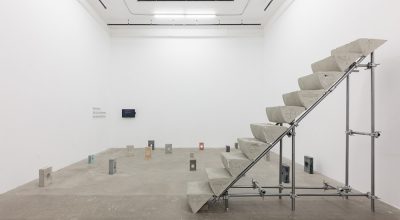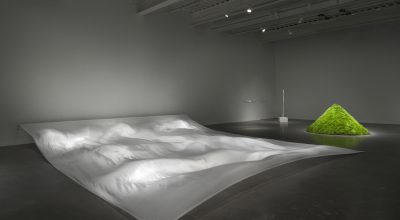
TWO EXHIBITIONS HIGHLIGHT LATINX ARTISTS’ ABSTRACT APPROACH
“A more comprehensive history, one that would consider numerous, diverse artists whose oeuvres should be contextualized on their own terms as well as within the history of American art, has yet to be written. This includes many Latinx artists, who remain largely absent from the critical discourse on abstraction”, writes the curator and author specializing in Mexican and Latino photography, Elizabeth Ferrer, in an essay accompanying the exhibition Latinx Abstract at BRIC, a leading arts and media institution anchored in Brooklyn.
This is one of two groundbreaking exhibitions currently on view in New York that asserts the enduring legacy of abstraction among Latinx artists. In Manhattan, LatchKey Gallery hosts XX, an exhibition of six female Latinx artists working with geometric abstraction. Both exhibitions emphasize, on the one hand, a desire to push against limitations and stereotypical expectations imposed upon Latinx artists, and on the other, the need to reassess the scope and history of abstract art itself.
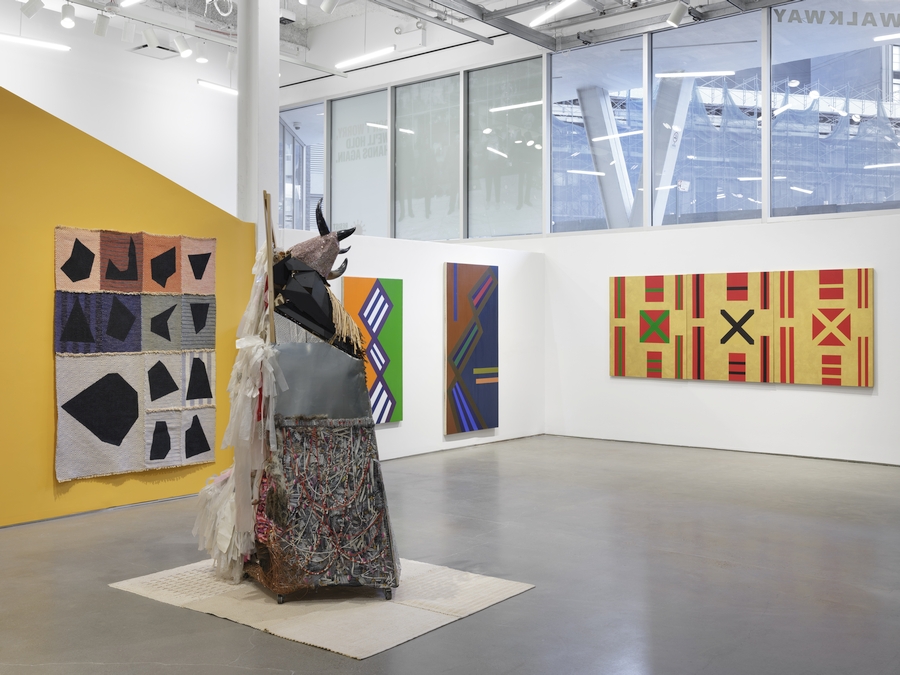


Latinx Abstract
Latinx Abstract presents a cross-generational survey of ten artists: Cándida Alvarez, Karlos Cárcamo, María Chávez, Alejandro Guzmán, Glendalys Medina, Freddy Rodríguez, Fanny Sanín, Mary Valverde, Vargas-Suarez Universal, and Sarah Zapata. Curated by BRIC’s Chief Curator, Elizabeth Ferrer, it challenges the established history of abstract art in the United States, which largely excludes the contributions of Latinx artists, individuals of Latin American descent based in the United States.
Distinct from Latin American abstraction, work in this mode by Latinx artists is a central, yet overlooked aspect of American painting. While engaging with art historical influences that range from pre-Columbian art to modernism in Europe and the United States, the artworks in this exhibition reveals an unusually broad range of sources and influences. They include Indigenous and Afro-Caribbean spiritual beliefs; mathematics, astronomy, and computer science; and aspects of popular culture like graffiti and hip hop. Latinx Abstract is a timely reassessment of American art history, as well as an expansion of the possibilities for abstraction.
The exhibition includes work by figures who are relatively young and whose careers span little more than a decade, to those who have been active for a half century or more. This cross-generational representation is central to the exhibition, demonstrating that abstraction is an enduring, if overlooked, tendency among Latinx artists.
These artists produce work that falls outside expected notions of “Latinx art” — if such a category even exists. Their bodies of work are neither figurative nor culturally specific nor political in the traditional or overt sense. Nevertheless, their allegiance to this mode can be viewed as a form of political expression when art that embodies race and ethnicity, or that displays emblems of culture, are seen by many as the legible, acceptable norm.
The work included in Latinx Abstract is intentionally diverse, whether in terms of the media employed by the artists or the issues they explore — history, politics, spirituality, gender, or traditional and popular culture, to name a few. Within this diversity is an emphatic embrace of freedom, to devise an artistic idiom that engages the full complexity of one’s identity, emotional, intellectual, and social.
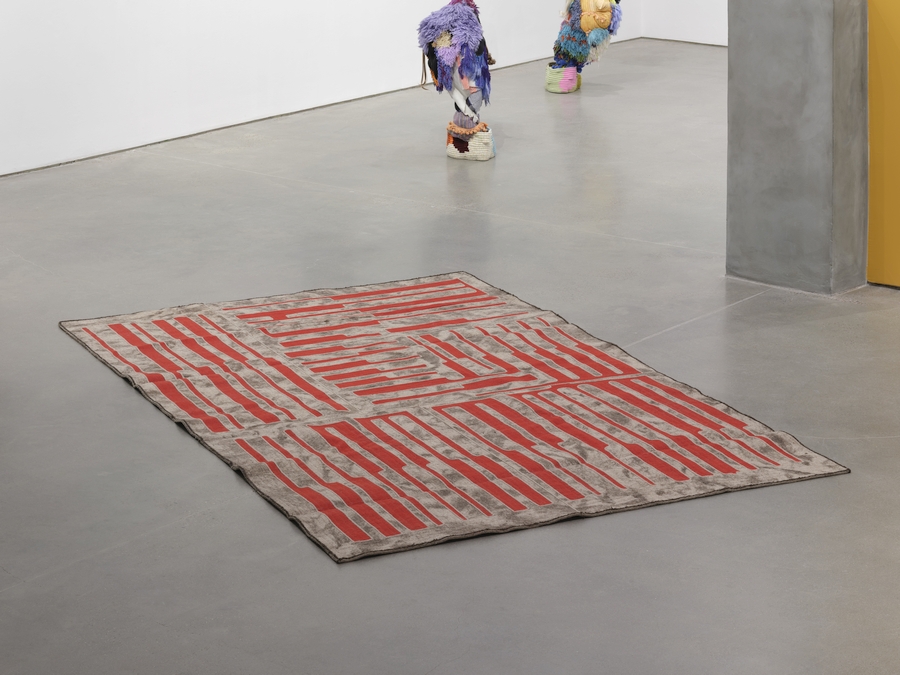



For some artists, abstraction extends to the creation of systems and languages, such as Vargas Suarez Universal, who uses vectors in work across media in his quest to meditate on our relationship to time and space, or Glendalys Medina, who affirms a sovereign self through the elaboration of a symbolic alphabet. The turn to textiles by many artists including Alejandro Guzmán, Vargas Suarez Universal, and Sarah Zapata, suggests not only a desire to explore linkages between artisanal craft and contemporary art practice, but also, a recognition of the relevancy of pre-Modernist visual modes for contemporary artists.
Moreover, color itself carries special weight among such artists as Karlos Cárcamo, Glendalys Medina, and Freddy Rodríguez, who have all explored the symbolism of gold, or Fanny Sanín, who creates a deeply personal and unique palette for every canvas. For Cándida Alvarez, color gives shape to form, and has the ability to reference a multitude of realms whether her own biography, nature and the landscape, her Puerto rican heritage, or visual culture, historic and contemporary.
The artist Mary Valverde has spoken about the need to negotiate persistent attitudes associated with the oeuvres of Latinx artists — for figuration, iconic symbols, images of struggle or protest — in other words, for literal visualizations of ethnic identity, a burden never placed on white artists. Valverde sees abstraction as an especially apt language because it offers the possibility of wholly new formulations, new languages, that can point aspirationally to expanded ways of thinking about our place in the world. The work in this exhibition, and by other Latinx artists who work nonrepresentationally, also challenges us to reframe our thinking about abstraction itself, in its capacity to express both political position and personal declaration, and to act as a discursive space for a multiplicity of artists who are reframing its scope.
The history of abstract art in the United States is predicated on a long established narrative, one that champions certain voices, movements and regions, and that promulgates this narrative through major museum exhibitions and permanent collections, academic courses, and in the writings of scholars and critics. Efforts by many art historians and curators over the last two decades have worked to rewrite this view of art history, bringing to the forefront much that had been excluded, especially the oeuvres of such African American artists as Norman Lewis, Alma Thomas, and Howardena Pindell. An even more comprehensive history, one that would consider numerous, diverse artists whose oeuvres should be contextualized on their own terms as well as within the history of American art, would include many Latinx artists, who remain largely absent from the critical discourse on abstraction.

XX
At LatchKey Gallery, XX features work by Beverly Acha, C.J. Chueca, Edra Soto, Ivelisse Jiménez, Marisol Martinez and Victoria Martinez. The exhibition is a response to current social and cultural shifts that aim to close historical gaps of visual representation, especially the exclusion of female Latinx artists working in abstraction. The six featured artists physically and metaphorically stake their claim within the contemporary conversation, evoking emotion in the viewer. They force us to recognize the space they boldly occupy.
Through reduction and repetition, C.J. Chueca and Victoria Martinez reframe abstractions of place. Using reclaimed materials such as tile fragments and discarded textiles, Chueca and Martinez channel the energy of their surroundings into compositions that welcome introspection, while asserting the white cube gallery for themselves.
Beverly Acha and Marisol Martinez use color and shape as tools of expression, balancing foreground and background to push and pull the viewer’s emotional consciousness. Colorful rectangles, squares and lines create cascading movements of evocative, beguiling play. Ivelisse Jiménez, while also working with color and shape, experiments with the boundaries of her artworks, often moving her materials beyond the traditional “edge” of the canvas. Utilizing scale and depth to envelop the body, Acha, Jimenez and Martinez create a transformative viewing experience.
Graceful geometric arcs and repetitive interlocking motifs will adorn the windows of the gallery in an installation from Edra Soto’s GRAFTseries, created specifically for this exhibition. Modeled after quiebrasoles—distinctly Puerto Rican ornamental concrete blocks that provide shade from the sun—the installation invites the viewer to peer through the tiny openings in the pattern of the installation to find photos taken by the artist during her time at home in Puerto Rico after Hurricane Maria. The viewfinders are inauspiciously placed throughout the piece to actively challenge viewers to reflect on the troubled relationship between the United States and Puerto Rico and the longstanding history of “looking in” and “walking away.”
The language of abstraction in and of itself is a form of dismantling an ordered way of thinking. Through their abstract art, these six female Latinx artists are a catalyst for progress, allowing us to think and feel more freely.


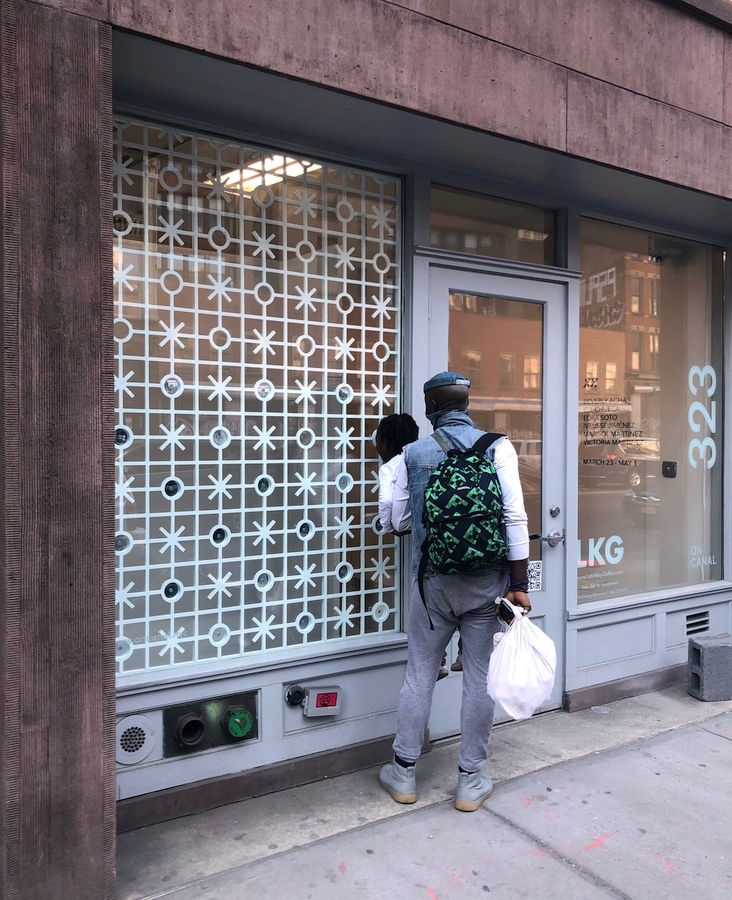
LATINX ABSTRACT
BRIC House, 647 Fulton Street (Enter on Rockwell Place), Brooklyn, NY
January 21 – May 2, 2021
*
XX
LatchKey Gallery, 173 Henry Street, New York, NY
March 23 – May 2, 2021
También te puede interesar
Ignacio Gatica.tanstaafl:there’s no Such Thing as a Free Lunch
Para su primera exposición individual en Estados Unidos, Ignacio Gatica (Santiago de Chile, 1988) presenta "TANSTAAFL: There's no such thing as a free lunch" [TANSTAAFL: No existe tal cosa como un almuerzo gratis], una...
New Museum Presents a Major Retrospective of Hans Haacke
For six decades, Haacke has been a pioneer in kinetic art, environmental art, Conceptual art, and institutional critique. This retrospective at the New Museum brings together a wide range of works, focusing in particular...
ECOLOGIES OF CARE
"Ecologies of Care" showcases a series of new works created during Ani Liu’s postpartum period, in contemplation of the labor of mothering. Reflecting the material culture of infant and childcare, the works shown are...

